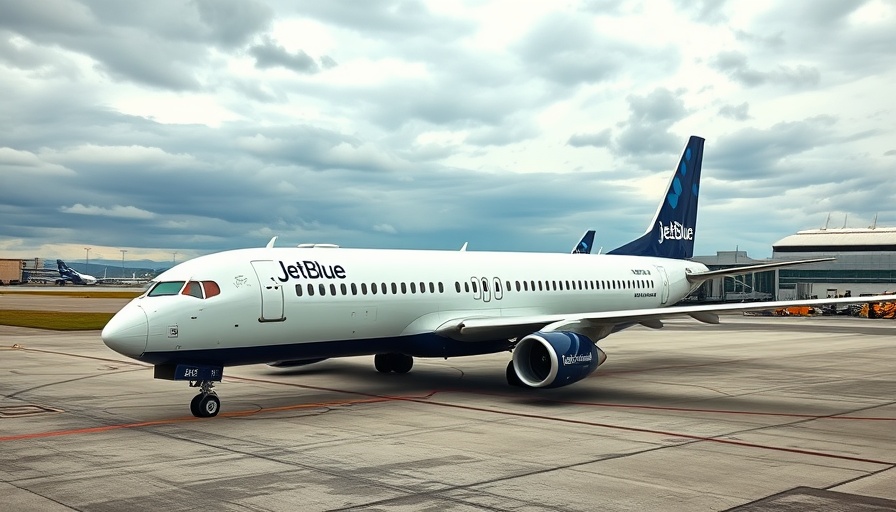
JetBlue's Strategic Retreat: Analyzing Their Route Culls
JetBlue Airways has made the significant decision to exit the Miami market altogether, effective September 3. This move is part of a broader strategy to reshape its operations in response to fluctuating demand and economic pressures affecting the airline industry. Notably, this decision follows their previous expansions aimed at capitalizing on lucrative vacation destinations, a strategy that seems to have faltered in recent times. The New York-based airline is shifting its focus away from Miami, redirecting its resources to Seattle-Tacoma International Airport, where routes will shift to seasonal operations beginning October 25, 2025.
Understanding the Financial Landscape
The commercial airline industry is experiencing a mixed bag of results, with many airlines reporting declines in economy-class domestic leisure travel. This slowdown has particularly impacted low-cost carriers like JetBlue, Southwest Airlines, and Frontier Airlines, which can heavily rely on these travelers. CEO Joanna Geraghty has openly addressed the ongoing challenges facing the airline, highlighting the urgency to streamline operations while continuing investments in premium services, such as new airport lounges and first-class cabins. This illustrates a shift in strategy where JetBlue aims to cater to higher-paying customers as they adjust to changing travel demands.
The Impact of Seasonal Cutbacks
For Seattle-Tacoma International Airport, the transition to seasonal services means that JetBlue will not be operating year-round, instead focusing on summer operations. This change leaves many potential adjustments for passengers to consider. Would travelers prefer summer flights over the convenience of more frequent year-round availability? As demand fluctuates seasonally, understanding consumer preferences will be crucial for the success of this strategy.
Examining The Broader Market Trends
According to industry analysis, while domestic leisure travel shows signs of slowing down, premium and international travel sectors continue to thrive. JetBlue's performance aligns with this trend. As airlines step up their fight for profitability, this adjustment highlights the challenges faced by carriers that predominantly rely on budget-conscious travelers.
Connections Between Route Changes and Customer Behavior
JetBlue's strategic pivot away from Miami may reflect deeper insights into consumer behavior. The airline initially entered this market in 2021 amidst the pandemic, representing growth and opportunity during uncertain times. However, as carriers recalibrate their offerings, it’s likely the decision to withdraw stems from understanding that Miami's demand for low-cost travel has not rebounded sufficiently.
Looking Ahead: Predictions and Opportunities
As JetBlue takes these proactive measures, they are also setting their sights on where future demand might lie—particularly in international routes, which seem to remain resilient even amid economic challenges. Their ongoing partnership with United Airlines may amplify opportunities for connections across important destinations and allow JetBlue to reposition itself effectively within the competitive landscape.
Conclusion: What Does This Mean For Travelers?
For travelers, these shifts in JetBlue's operations indicate a changing landscape within the airline industry, where strategic adjustments are becoming the norm. Frequent flyers, vacationers, and occasional travelers alike will need to remain vigilant about changes in available routes and offerings, particularly as the travel industry seeks to find its footing post-pandemic. Connecting the dots between JetBlue’s route modifications and market demands will be key for future planning.
As the airline navigates these changes, potential travelers should stay informed and flexible, adapting their travel choices to match JetBlue's evolving route map. Maintaining awareness of these shifts could lead to exciting, yet opportunistic, travel experiences in the near future.
 Add Row
Add Row  Add
Add 



Write A Comment